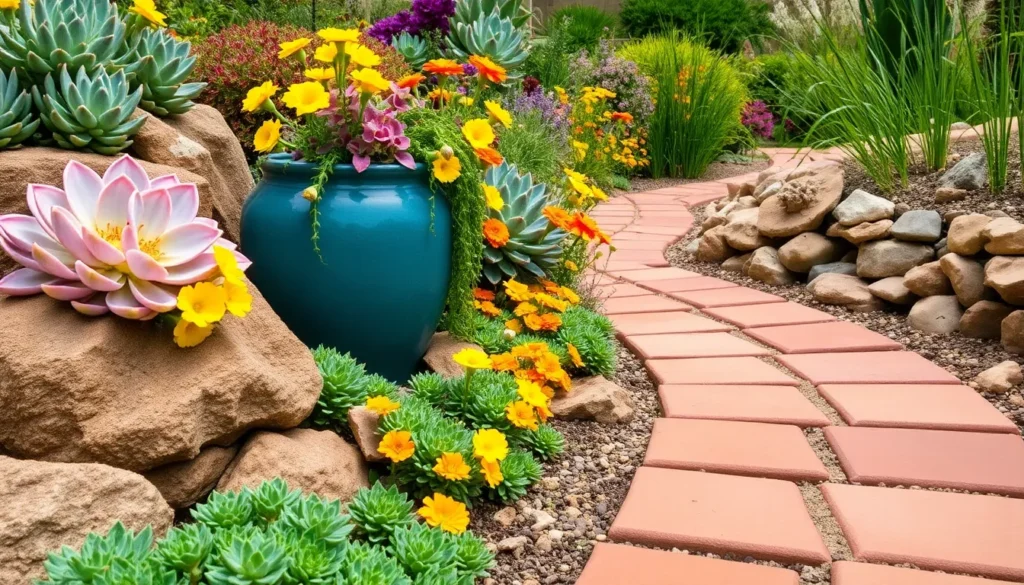Welcome, green thumbs and budding enthusiasts alike, to a world where vibrant gardens burst into life with every shade of the rainbow, all while sipping water like a fine wine. “12 Colorful Water-Saving Garden Ideas” is here to inspire and equip you with the know-how to create stunning garden spaces that are as sustainable as they are beautiful.
Whether you’re a seasoned gardener or just starting to plant your first seed, this guide promises to unlock the secrets of combining aesthetic appeal with environmental responsibility. You’ll discover practical techniques that not only conserve water but also bring a kaleidoscope of colors to your backyard, patio, or balcony, proving that eco-friendly gardening can still be lush and lively.
Imagine the satisfaction of nurturing a garden that thrives in harmony with nature, rewarding you with blooms that dazzle and designs that delight. With our carefully curated ideas, you’ll feel empowered to transform your space into a vibrant oasis, confident in the knowledge that each technique supports a more sustainable future.
Incorporate Drought-Tolerant Perennials
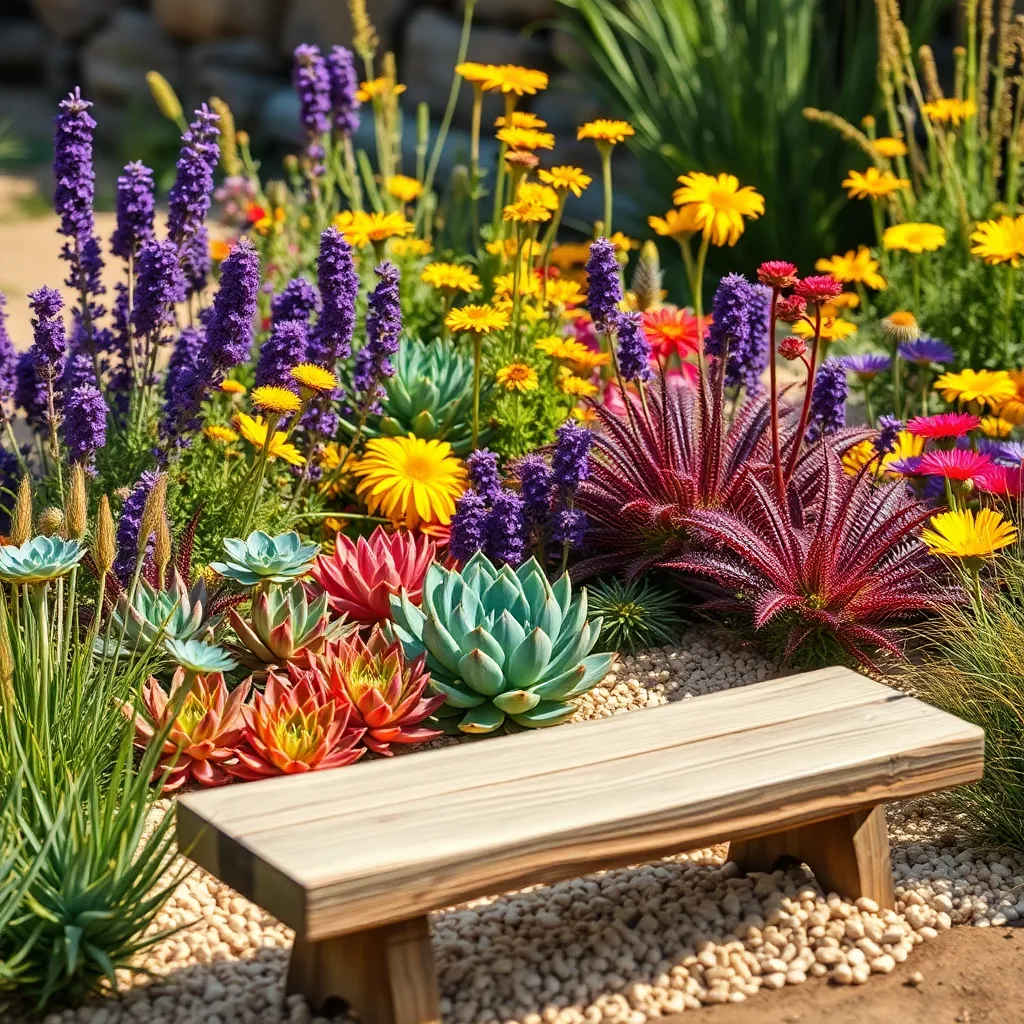
Integrating drought-tolerant perennials into your garden is an excellent way to conserve water while maintaining vibrant color. These plants are not only resilient but also add a diverse palette to your landscape.
Begin by selecting perennials such as lavender, yarrow, and sedum, which thrive in dry conditions. Plant them in well-draining soil and ensure they receive at least six hours of direct sunlight daily.
Watering frequency for these drought-tolerant plants can be significantly reduced once they’re established. During the first year, water deeply but infrequently to encourage deep root growth, then let nature take its course.
For more advanced gardeners, consider grouping plants with similar water needs together to create microclimates within your garden. This not only enhances the aesthetic appeal but also optimizes water usage by catering to the specific requirements of each plant group.
Select Colorful Native Plants
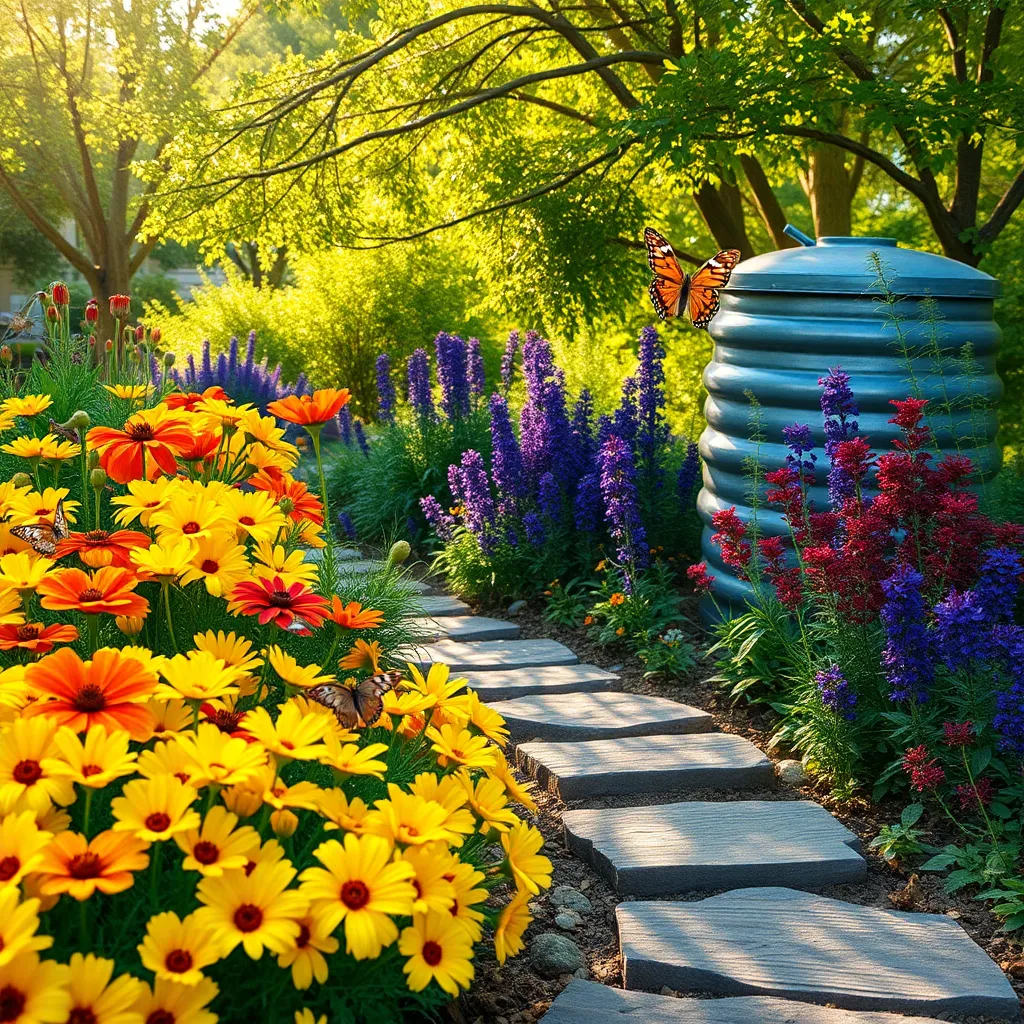
Adding colorful native plants to your garden is a brilliant way to create a vibrant landscape while conserving water. Native plants are naturally adapted to your local climate, making them more resilient and less demanding in terms of watering and maintenance.
Consider integrating plants like the California poppy, which flourishes in well-draining soil and full sun. This hardy plant requires minimal water once established, making it an excellent choice for drought-prone areas.
To enhance the diversity of your garden, include Blanket flowers (Gaillardia), which are known for their brilliant blooms and ability to thrive in poor soil conditions. Water these perennials sparingly, as too much moisture can lead to root rot.
For a splash of purple, the Liatris or blazing star is a fantastic option, known for attracting pollinators like bees and butterflies. Plant them in sandy or rocky soil and ensure they receive full sunlight for optimal blooming.
Install Drip Irrigation Systems
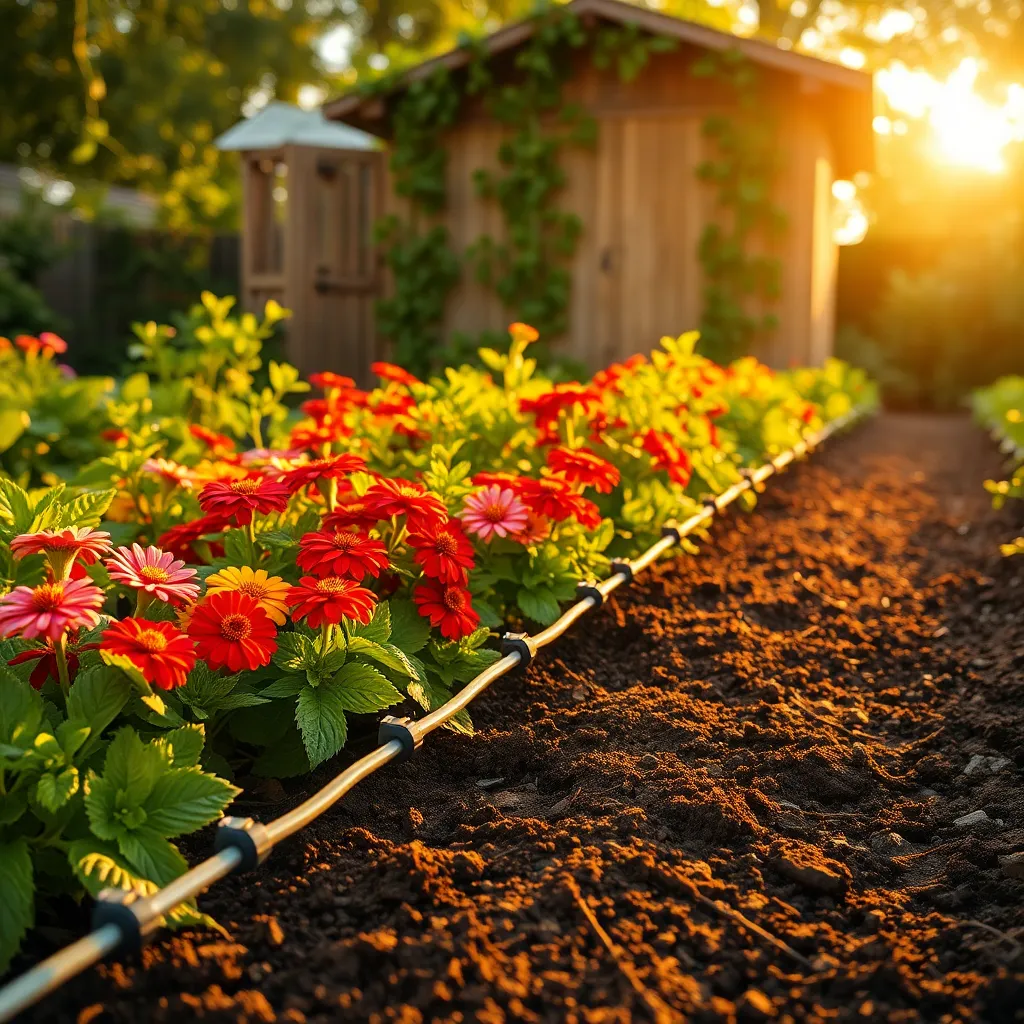
Drip irrigation systems are a fantastic way to conserve water while ensuring your garden thrives. They deliver water directly to the roots of plants, minimizing evaporation and runoff, and are especially beneficial in areas prone to drought.
To get started, assess your garden layout and plant types to determine the best configuration for your drip irrigation system. Consider factors like plant spacing and water needs to ensure each plant receives adequate hydration.
Install the mainline tubing along your garden beds, using connectors to branch off to individual plants or rows. Emitters or drip lines should be placed close to the base of each plant, allowing the water to seep directly into the soil where it’s needed most.
Regularly check your system for clogs and leaks to maintain optimal performance. Flush the lines periodically to remove any debris that could obstruct water flow, ensuring your plants continue receiving consistent moisture.
Utilize Mulch to Retain Moisture
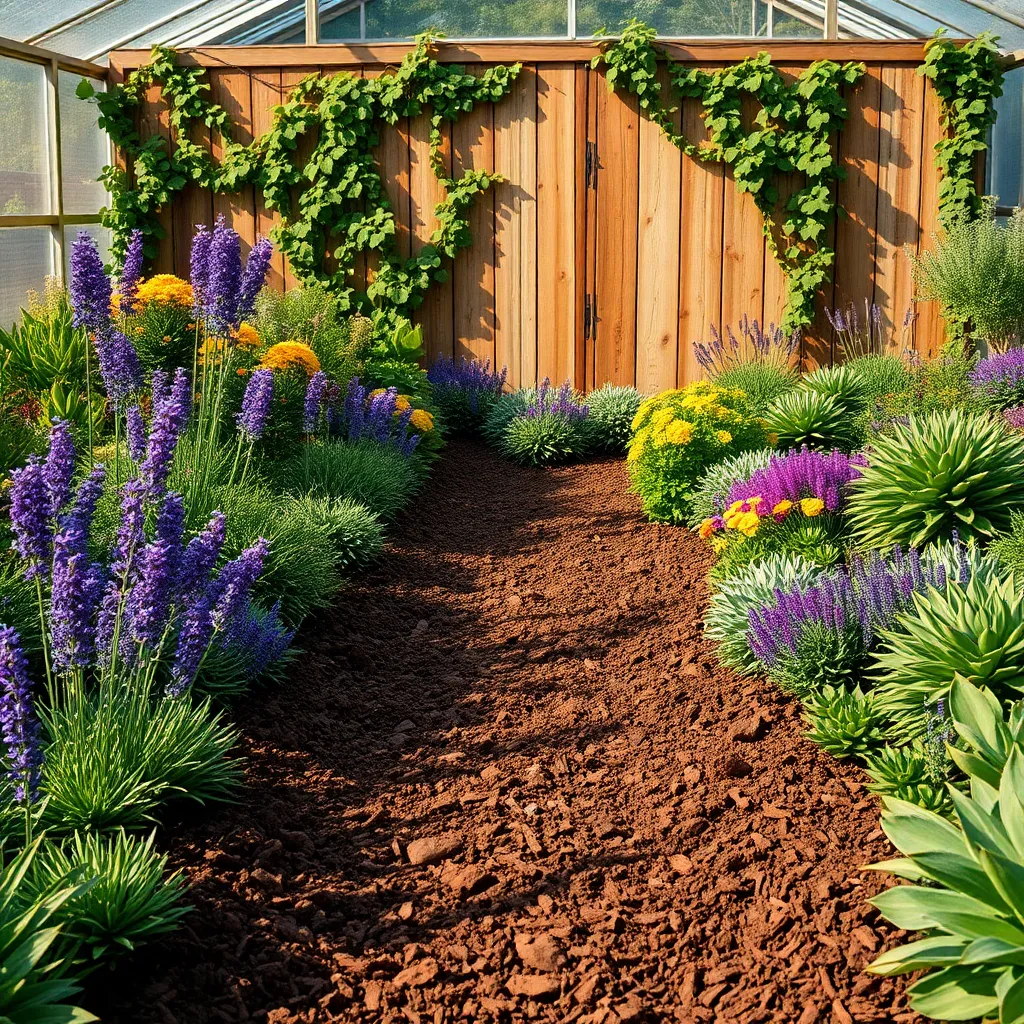
Mulch is a gardener’s best friend when it comes to conserving water in the garden. By applying a layer of mulch, you can significantly reduce evaporation, helping your soil retain more moisture and keeping your plants hydrated longer.
Organic mulches like bark, straw, or shredded leaves not only conserve water but also improve soil health as they decompose. As they break down, these materials add nutrients back into the soil, promoting healthier plant growth over time.
For beginners, an easy way to start is by applying a 2-3 inch layer of mulch around your plants, leaving a small gap around the stem to prevent rot. More experienced gardeners might experiment with different mulch types, such as pine needles or cocoa hulls, which can also add a decorative touch to your garden.
It’s important to choose the right mulch for your specific climate and garden needs. For example, in hotter climates, a thicker layer of mulch might be necessary to offer adequate protection from the sun’s intense heat.
Group Plants by Water Needs
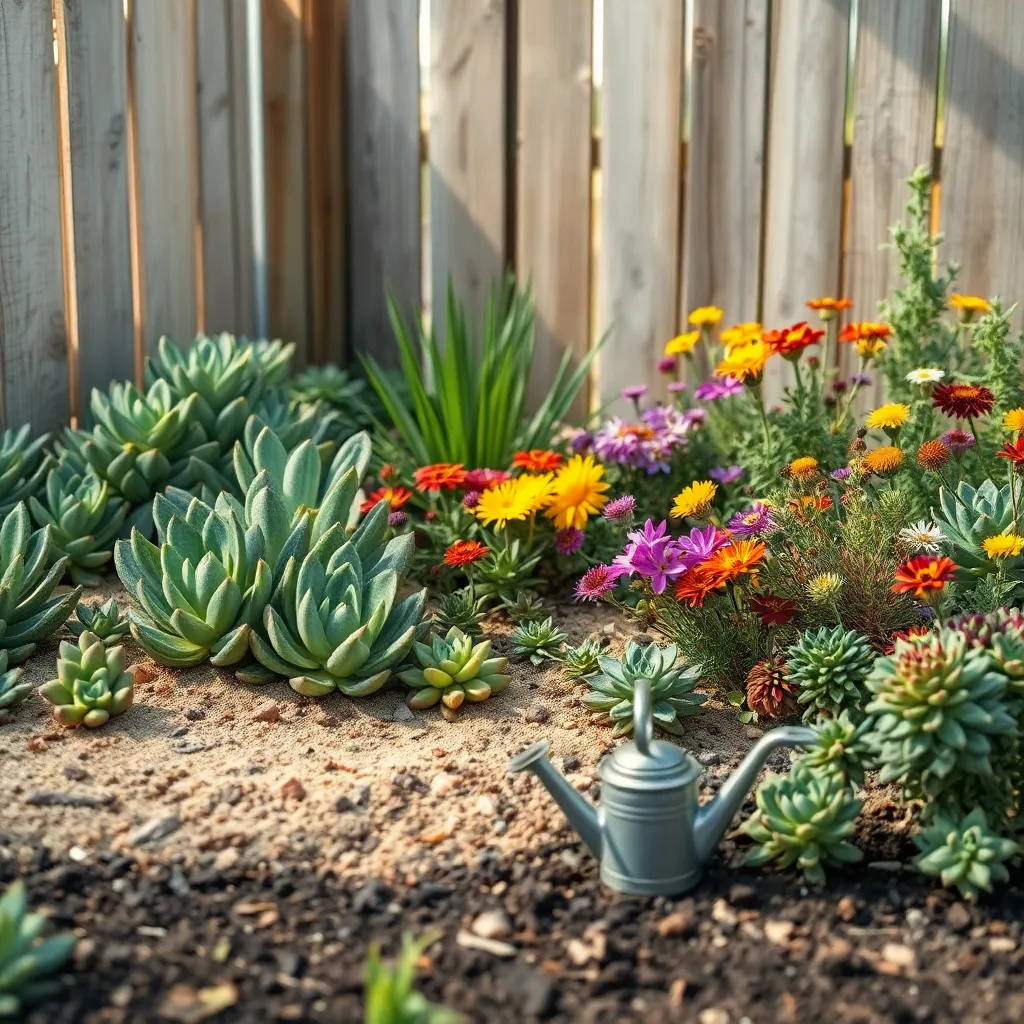
Grouping plants by their water needs is a clever way to create a water-efficient garden. This method ensures that each plant receives the appropriate amount of moisture, reducing waste and improving plant health.
Begin by identifying plants that thrive in similar moisture conditions. For instance, succulents and cacti are perfect companions, as they both require infrequent watering and well-draining soil.
On the other hand, plants like ferns and hostas enjoy consistently moist soil, making them ideal partners in a shaded area. To maintain the optimal moisture level for these plants, consider using a drip irrigation system or soaker hoses, delivering water directly to the roots.
For advanced gardeners, consider installing a zoned irrigation system that caters to different plant groups. This technique allows you to automate watering schedules based on each zone’s specific needs, optimizing water usage and saving time.
Incorporate organic compost into your soil to improve its water retention capabilities. Compost not only enhances soil structure but also provides essential nutrients, reducing the need for additional fertilization.
Opt for Vibrant Succulent Varieties
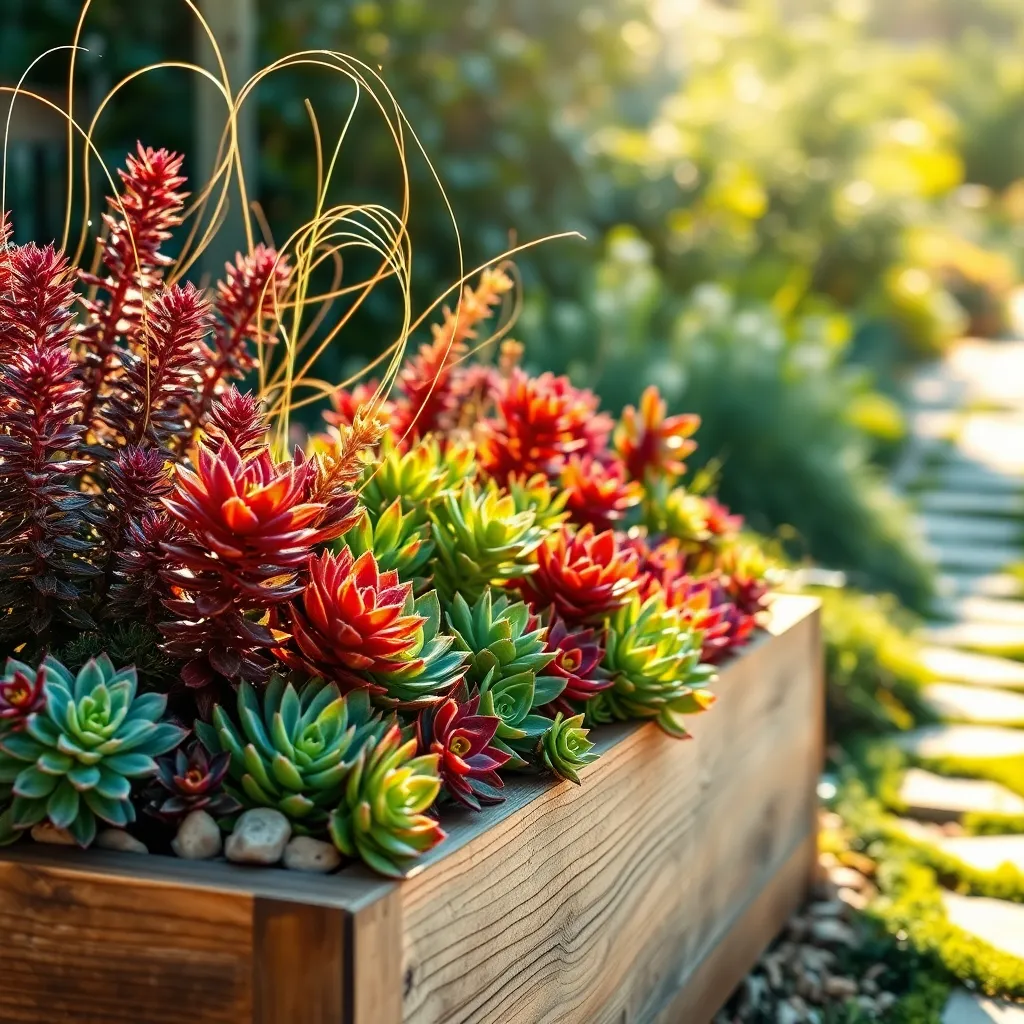
Succulents offer a dazzling array of colors and textures, making them perfect for adding vibrancy to your water-saving garden. With their low water requirements, they are ideal for gardeners looking to conserve resources while maintaining a stunning landscape.
To succeed with succulents, start by selecting varieties that thrive in your climate. Echeveria, Sedum, and Aloe are popular choices known for their resilience and beauty, and each brings unique hues and forms to your garden.
It’s crucial to plant succulents in well-drained soil to prevent root rot. A mix of cacti soil with perlite works well, ensuring your plants remain healthy and vibrant by allowing excess water to escape quickly.
Watering succulents is straightforward but requires attention to detail. During the growing season, water them thoroughly but infrequently, allowing the soil to dry out completely between waterings to mimic their natural arid habitats.
For more advanced gardeners, consider experimenting with succulent propagation to expand your collection cost-effectively. Leaf cuttings from mature plants can be gently removed, rested until they develop calluses, and then planted in moist soil to encourage new growth.
Create a Rainwater Harvesting System
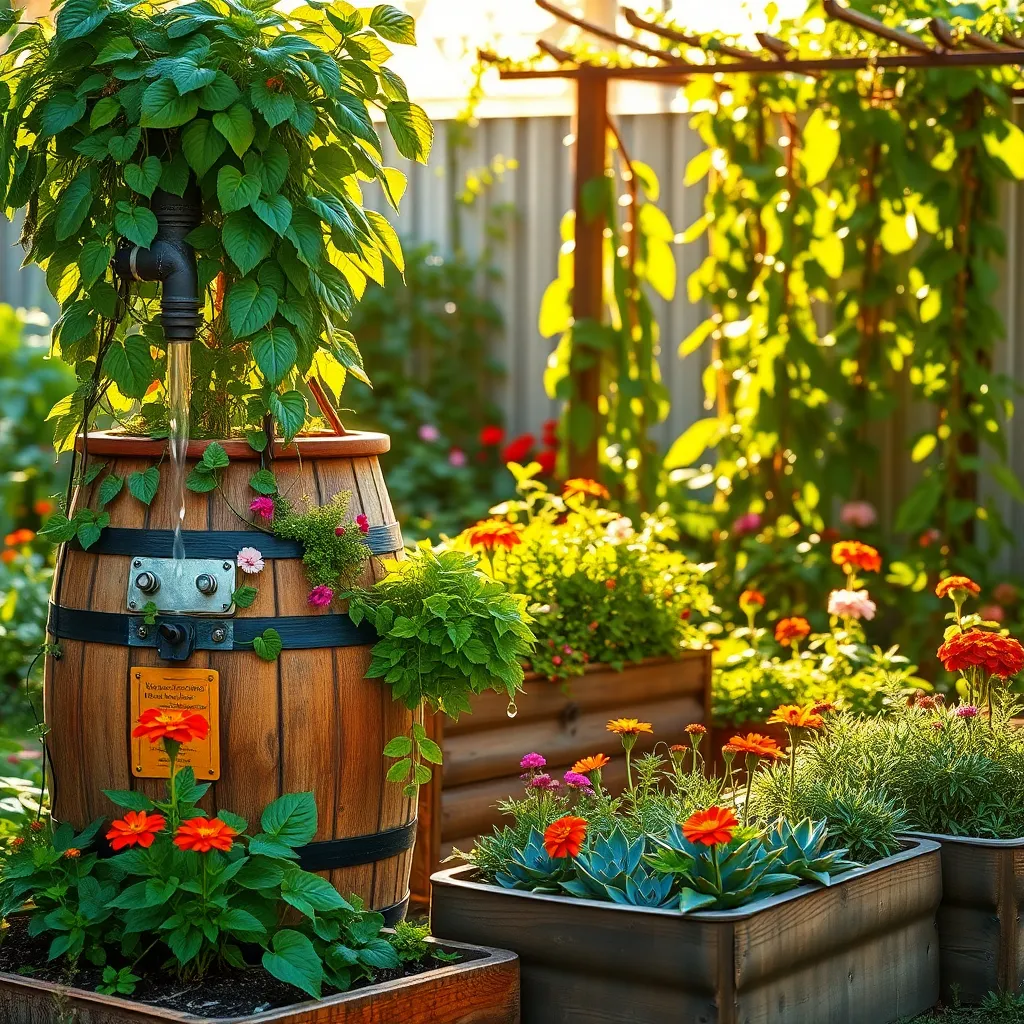
Transform your garden into a sustainable oasis by creating a rainwater harvesting system. This eco-friendly approach not only conserves water but also ensures your plants receive pure, chemical-free hydration.
To start, consider installing a rain barrel beneath a gutter downspout to collect runoff from your roof. Ensure the barrel is equipped with a spigot, making it easy to transfer water to your garden using a hose or watering can.
For those looking to maximize efficiency, connect multiple barrels with a linking kit to increase your storage capacity. This setup will be particularly beneficial during dry spells when water conservation is crucial.
Remember to use collected rainwater responsibly by targeting the roots of your plants to minimize evaporation. Regularly clean your barrels and check for debris in the gutter to maintain water quality and system efficiency.
Choose Reflective, Light-Colored Hardscapes
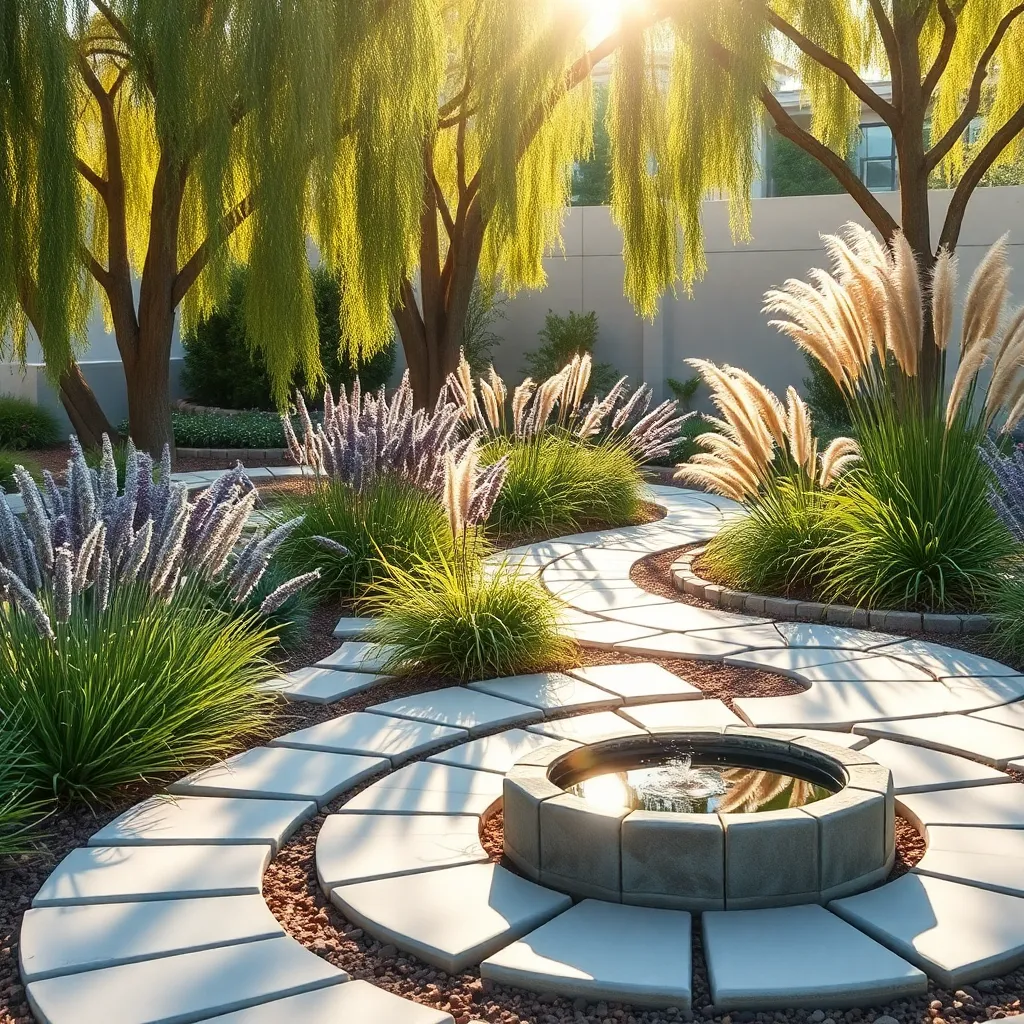
Opting for reflective, light-colored hardscapes can significantly reduce the amount of heat absorbed in your garden, creating a cooler environment for plants. This choice is especially beneficial in sunny climates, where excessive heat can stress plants and increase water evaporation from the soil.
Using materials such as white gravel, light-colored pavers, or concrete can help reflect sunlight rather than absorb it. These materials not only keep the garden cooler but also enhance the vibrant colors of your plants, making them stand out beautifully.
For beginners, consider starting with simple pathways or borders using light-colored stones. These can be easily installed and are a cost-effective way to test how reflective surfaces can benefit your garden.
Advanced gardeners might explore incorporating larger hardscape features like patios or seating areas with reflective surfaces. These installations not only improve garden aesthetics but also contribute to a more sustainable garden environment by reducing the need for frequent watering.
Add Water-Efficient Ornamental Grasses
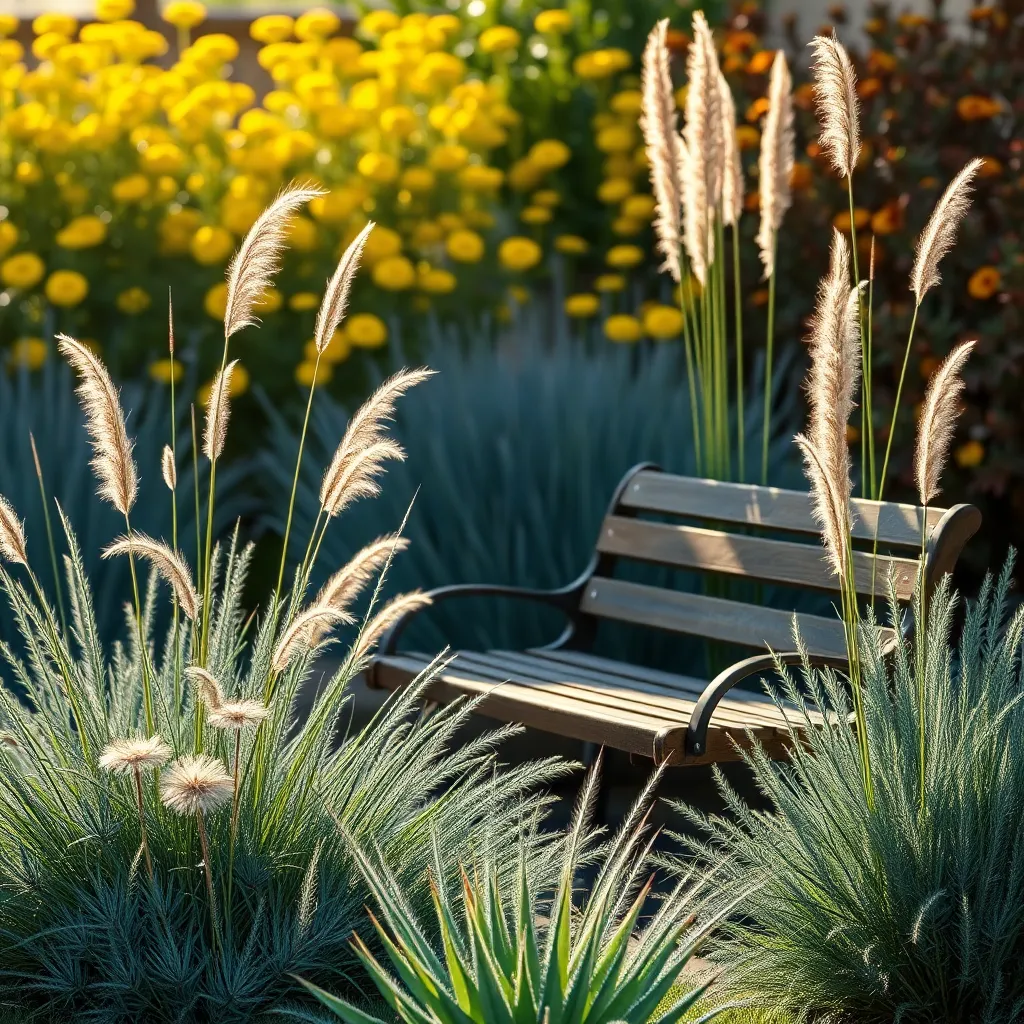
Incorporating water-efficient ornamental grasses into your garden is a smart way to add color and texture while conserving resources. These grasses are not only drought-tolerant but also require minimal maintenance, making them ideal for busy gardeners.
Consider varieties like Blue Fescue and Feather Reed Grass, which offer vibrant hues and interesting forms. Blue Fescue thrives in well-drained soil and full sun, while Feather Reed Grass adapts well to a variety of soil types and can tolerate partial shade.
Watering these plants once established is straightforward, as they require only occasional deep watering during extended dry spells. Mulching around the base of the grasses helps retain moisture and reduce the need for frequent watering.
For a more advanced gardening technique, try mixing different grass species to create a dynamic visual display. This not only enhances the aesthetic appeal but also encourages biodiversity, which can lead to a healthier garden ecosystem.
Design with Colorful Xeriscape Plants
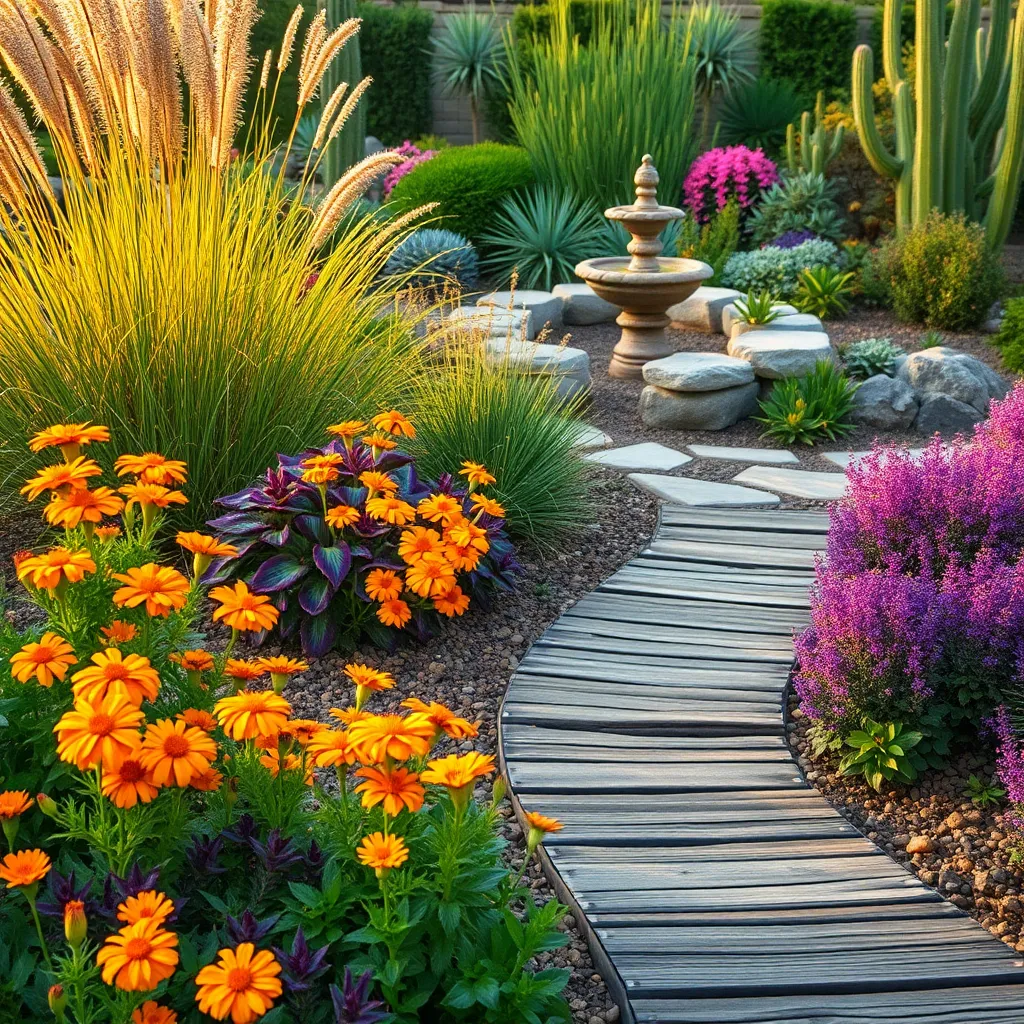
Designing a xeriscape garden with colorful plants can be both visually stunning and environmentally friendly. To start, select drought-tolerant plants that thrive in your region’s climate, ensuring they receive the appropriate amount of sunlight.
Consider incorporating a mix of flowering perennials like Lavender and Salvia for their vibrant hues and resilience. These plants not only add color but also attract pollinators, enhancing your garden’s ecological balance.
For a more textured look, combine succulents like Agave and Sedum with their bold forms and varied shades. These plants require minimal watering once established, making them perfect for water-conscious gardeners.
Make sure to prepare the soil by improving drainage with the addition of sand or gravel, which is crucial for xeriscape plants. Water deeply but infrequently to encourage deep root growth, further enhancing their drought resistance.
Implement Soil Moisture Retention Techniques
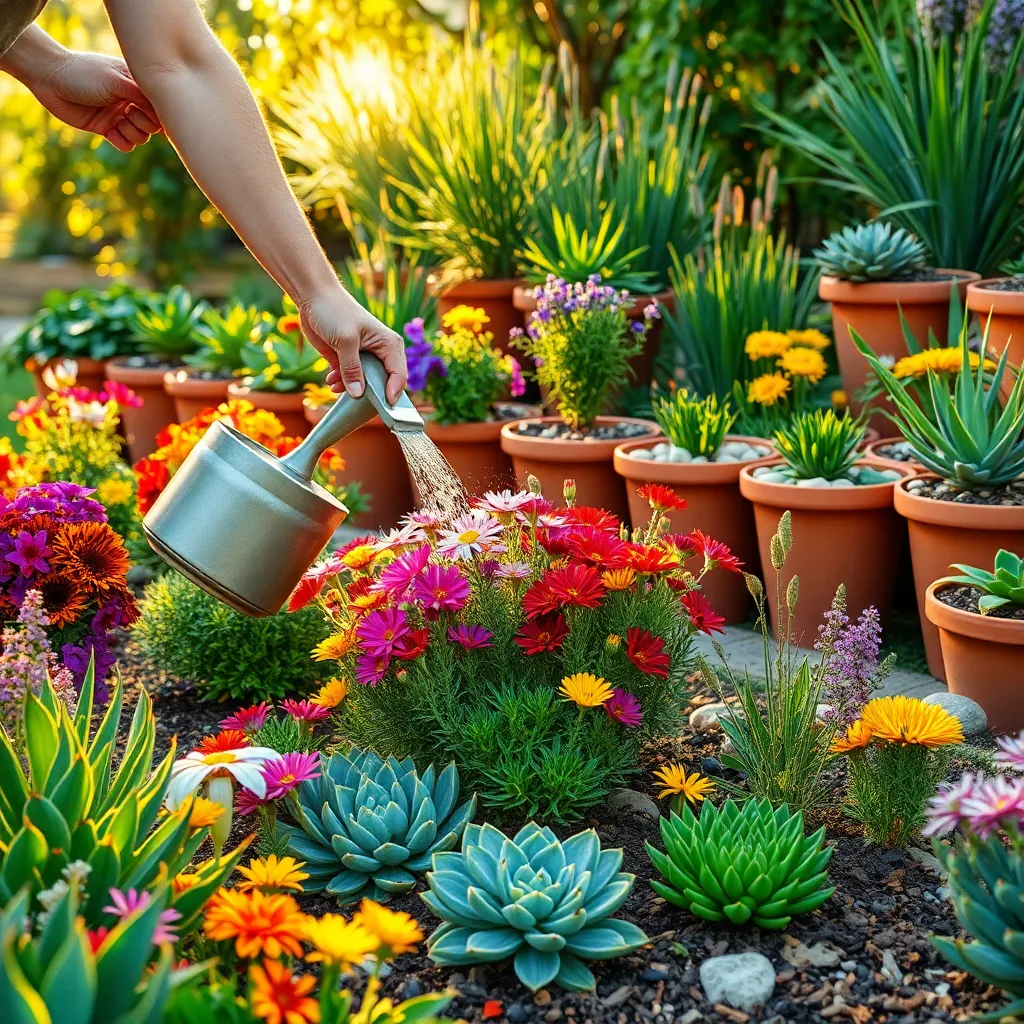
To ensure your garden remains vibrant and water-efficient, implementing soil moisture retention techniques is essential. Begin by incorporating organic matter such as compost or well-rotted manure into your soil, as this enhances its ability to hold onto moisture effectively.
Another effective strategy is to use mulch, which helps to reduce evaporation and maintain a consistent soil temperature. Apply a layer of organic mulch, like shredded bark or straw, around your plants; this not only conserves water but also suppresses weeds.
For those looking to take their gardening to the next level, consider investing in water-absorbing polymers. These polymers can be mixed into the soil to significantly increase its water retention capacity, making them ideal for areas prone to drought.
Additionally, selecting the right soil type can make a significant difference in moisture retention. Opt for loamy soil, which is a balanced mix of sand, silt, and clay, as it provides the optimal structure for both holding moisture and allowing adequate drainage.
Plant Bright, Low-Water Ground Covers

Bright, low-water ground covers are an excellent choice for gardeners looking to save water while adding a splash of color to their landscape. These plants are often drought-tolerant and thrive in various soil types, making them versatile additions to any garden.
One great option is the vibrant Ice Plant, known for its stunning blooms and succulent leaves. It requires minimal watering—just once every two weeks—making it ideal for dry climates or those looking to reduce water use.
Consider planting Creeping Thyme, which not only offers a lovely fragrance but also produces a carpet of purple flowers. This plant prefers well-draining soil and should be located in a spot where it receives full sun for optimal growth.
For a pop of yellow, try the Woolly Yarrow, which is both hardy and attractive. Regularly trim it back to encourage new growth and prevent it from becoming too leggy, ensuring it remains a lush ground cover all season long.
Conclusion: Growing Success with These Plants
In exploring the vibrant world of water-saving garden ideas, we’ve delved into twelve key concepts that not only beautify our outdoor spaces but also nurture our relationships. From incorporating native plants that resonate with resilience to creating rain gardens that mirror adaptability, each idea is a metaphor for the qualities that strengthen our bonds. Embracing xeriscaping fosters mindfulness, while vertical gardens encourage growth and creativity together. The shared effort in nurturing succulents or building a rain barrel system fosters teamwork and communication. By choosing drought-tolerant flowers, we celebrate diversity and embrace sustainability, mirroring the harmony we seek in our relationships.
As an actionable step, pick one concept to implement this weekend with your partner or loved ones. Let this shared activity be a seed for deeper connection and understanding.
Bookmark this article as your go-to guide for relationship inspiration and growth. Remember, just like a well-tended garden, successful relationships require continuous care and creativity. As you cultivate these water-saving ideas, may you also cultivate a thriving, resilient connection with those you cherish. Together, let’s plant the seeds of lasting love and watch them flourish.

